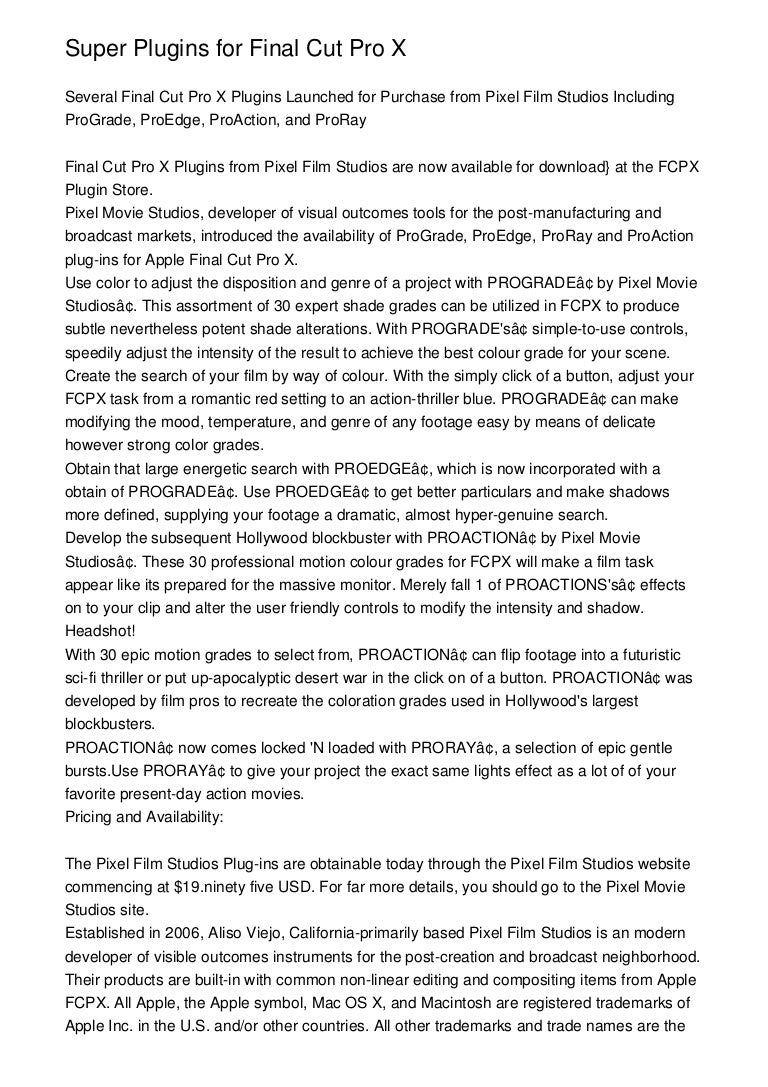

- #Final cut pro titles pixelated how to
- #Final cut pro titles pixelated pdf
- #Final cut pro titles pixelated plus
Yes, a designer can work around the problem, but with extra time and cost to the client, plus the chance of problems.
#Final cut pro titles pixelated how to
Just far too easy for someone to forget about the problem and how to get around it, plus the extra time and cost to the client to watch for and fix the issues in a publication.
#Final cut pro titles pixelated pdf
I've been really liking Publisher throughout the beta process and have been using it to produce several web pdf publications, but this issue really spells trouble for doing any print shop cmyk work. Just way too much to be concerned about when creating something if we're suddenly back to the old days of difficult transparency and drop shadows (yes, I remember those days!). I'm thinking that until Serif can solve this issue, my production company will have to continue to use our old CS5 ID for anything requiring CMYK-X3 output for a print shop/print job. While I now understand how you did this, I can also see that this is a HUGE PITA. Thus drop shadows have to be manually created and added in a masking Picture Frame that does not intersect underlying text. The Picture Frame must be the exact size of the graphic element and cannot include anything transparent. limit its upper edge with a rectangular mask, so it does not touch the text and a second circle in size of the 'coin' and limit the mask shape to the 'coin' circle and To avoid transparency here you separate the 'coin' and its shadow by a mask (as you did already) for the image but. tif is not that easy but works in this case because the shadow of the circled image does not touch the text. png is placed on the text but cut off by the masking frame. A picture frame with rounded corners cuts off the transparency in your logo.png and limits the rectangular shape by its rounded vector shape. The key is, to place no kind of transparency on the text but using any vector shape as mask instead.Ī picture frame works as mask and cuts off the area around its image inside. Is the key to put graphics into a picture frame when overlaying text? In your sample, is the key to put graphics into a picture frame when overlaying text?

You will see a text/image combination, built in 2 different ways – one will output pixelated text, the other will stay vector, when using PDF/X-3 specifications. Just have a close look at the attached sample file. Adobe – as the inventor of PDF – has much more experience with PDF output flattening and I bet, this behaviour will be optimised in Publisher from version to version.īut: In many cases, it is possible to avoid this behaviour by modifying the layout. (In your case, InDesign would simply spoken „fill“ the text with the respective parts of your image, thus maintaining its vector outlineS. Therefore vector text sometimes becomes pixel text in this situation. Adobe apps are much more „intelligent“ by using image filled clipping areas instead whenever possible. That means, transparent parts of your layout have to be flattened (= „combined“ with the underlying areas) Publisher actually achieves this (not always, but very often) by converting and combining these elements to an image. If you export to PDF/X-3, transparency isn’t allowed.


 0 kommentar(er)
0 kommentar(er)
